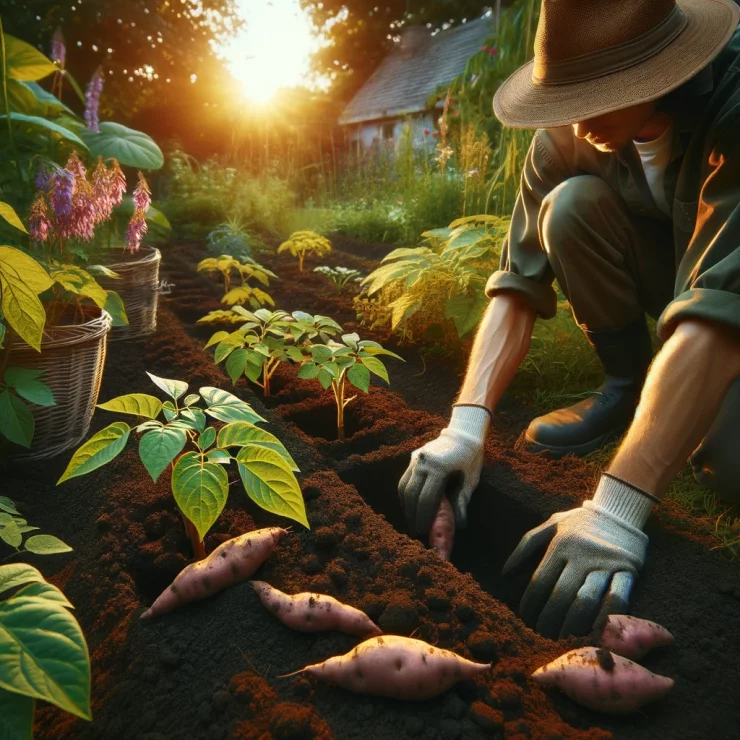Sweet potatoes are a versatile and delicious addition to any garden. Not only are they tasty, but they are also packed with nutrients and relatively easy to grow. However, there are some common mistakes that novice and experienced gardeners alike often make when planting sweet potatoes. Avoiding these missteps can help ensure a successful harvest. Here are seven mistakes to watch out for:
Planting Too Early: Sweet potatoes are a warm-weather crop and should only be planted after the last frost has passed. Planting too early can expose young plants to cold temperatures, stunting their growth or even killing them. Wait until the soil has warmed up to at least 60°F (15°C) before planting sweet potatoes outdoors.
Choosing the Wrong Location: Sweet potatoes thrive in well-drained, loose soil with plenty of sunlight. Planting them in heavy clay soil or in a shady spot can lead to poor growth and small yields. Select a sunny location with loose, sandy soil for optimal results.
Skipping Soil Preparation: Proper soil preparation is essential for healthy sweet potato plants. Amend the soil with plenty of organic matter, such as compost or aged manure, to improve drainage and fertility. Avoid planting sweet potatoes in soil that is compacted or depleted of nutrients.
Overwatering: While sweet potatoes need regular watering, they are susceptible to rot if the soil remains consistently waterlogged. Aim to keep the soil evenly moist but not saturated. Mulching around the plants can help retain moisture and prevent weed growth.
Planting Too Deeply: Sweet potato slips, or young plants, should be planted shallowly, with only the bottom few inches buried in the soil. Planting them too deeply can hinder root development and reduce yields. Space the slips about 12-18 inches apart in rows that are 3-4 feet apart.
Neglecting Weed Control: Weeds compete with sweet potatoes for nutrients, water, and sunlight, which can hinder their growth and productivity. Keep the area around your sweet potato plants free of weeds by regularly hoeing or hand-pulling them. Applying mulch can also help suppress weed growth.
Harvesting Too Late: Sweet potatoes should be harvested before the first frost in fall. Leaving them in the ground too long can result in cold damage or rot. Harvest sweet potatoes carefully, being careful not to bruise or damage the roots. Cure them in a warm, humid location for about 10-14 days before storing them in a cool, dry place.
By avoiding these common mistakes, you can increase your chances of successfully growing a bountiful crop of sweet potatoes. With proper care and attention, you’ll be rewarded with a harvest of delicious, nutritious tubers that you can enjoy throughout the year. Happy gardening!






Add comment